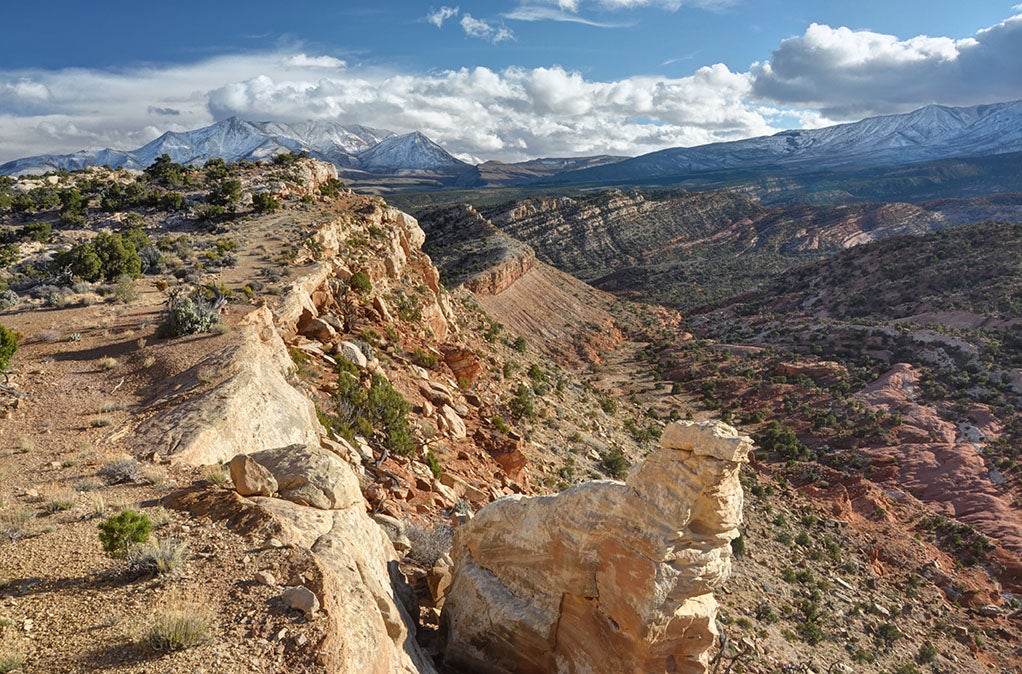Court Rejects Utah’s Efforts To Undermine Off-Road Vehicle Planning On 6 Mil Acres
Victory
—Environmental groups have fought off an attempt by Utah to derail protections for public lands, including lands surrounding Arches and Canyonlands National Parks and Dinosaur National Monument
Contact
The U.S. Court of Appeals for the Tenth Circuit Court issued a short opinion this week dismissing challenges brought by the State of Utah and various counties to a settlement between conservation groups, the United States, and off-road vehicle groups over travel management plans governing millions of acres of public lands in southern and eastern Utah. The court ruled that Utah’s appeal and the counties’ appeals were not “ripe” for adjudication, clearing the way for the Bureau of Land Management (BLM) to continue working on new travel plans for six million acres of public lands.
The State and counties were attempting to challenge an agreement that resolved legal battles on six land use and travel plans that were completed at the end of the George W. Bush administration. Those plans designated a spider web of approximately 20,000 miles of off-highway vehicles routes on federal public lands. The settlement, reached after a district court ruled that one of the plans did not comply with applicable federal laws, required the BLM to revisit these decisions across more than 6 million acres, in order to minimize the impacts of off-highway vehicles on cultural resources and wilderness landscapes that provide opportunities for solitude and primitive recreation, and to monitor for illegal use.
“This settlement is good news for Utah’s iconic public lands, including magnificent lands surrounding Arches and Canyonlands National Parks, Glen Canyon National Recreation Area and Dinosaur National Monument,” said Robin Cooley, staff attorney at Earthjustice representing the conservation groups. “With Utah’s attempts to derail protections out of the way, the Bureau of Land Management can now take a fresh look at where it will allow off-highway vehicles to drive, this time with an eye towards protecting the very things that make red rock country so special — its sweeping wildness, opportunities for solitude, and irreplaceable archaeological sites.”
The initial settlement was reviewed and approved by federal district court judge Dale A. Kimball in Salt Lake City, who stated in his order that the agreement “is a fair and lawful resolution of years of litigation” and is consistent with applicable federal law. Despite this ruling, Utah and several counties appealed, using state taxpayer dollars for a legal challenge that has been soundly rejected with this week’s opinion from the 10th Circuit.
“With the state and counties’ challenge to the settlement agreement behind us we can focus our work on making sure that BLM-Utah’s new travel management plans fully account for and protect Utah’s unique cultural resources and red rock wilderness lands,” said Stephen Bloch, legal director for the Southern Utah Wilderness Alliance (SUWA). “SUWA and its allies have already put hundreds of hours into field work for the first three plans to be released in 2019 and 2020, located throughout the state and home to remarkable wilderness caliber landscapes, including Labyrinth Canyon, the Henry Mountains, and public lands adjacent to Dinosaur National Monument.”
“The Bureau of Land Management now has the re-affirmed authority to keep moving forward with planning efforts they have already poured hours and hours of work into,” said Nada Culver, director of The Wilderness Society’s BLM Action Center. “Attempts to delay the BLM’s work not only puts treasured wilderness quality lands at risk, it undermines the collaborative efforts that led to the settlement. Now we can keep working to ensure the BLM’s travel plans do all they can to strike the right balance, considering conservation and recreation activities on our public lands.”
BACKGROUND
See photos of proposed wilderness areas in new “travel management areas” contemplated by the settlement agreement.
The following conservation groups were plaintiffs to the initial litigation and parties to the settlement agreement: Southern Utah Wilderness Alliance, The Wilderness Society, Natural Resources Defense Council (NRDC), Sierra Club, Grand Canyon Trust, National Parks Conservation Association, National Trust for Historic Preservation, Rocky Mountain Wild, Great Old Broads for Wilderness and Utah Rivers Council.
The conservation groups were represented by attorneys from Earthjustice, SUWA, NRDC, and the law firm of Waltzer, Wiygul and Garside.

Additional Resources
About Earthjustice
Earthjustice is the premier nonprofit environmental law organization. We wield the power of law and the strength of partnership to protect people's health, to preserve magnificent places and wildlife, to advance clean energy, and to combat climate change. We are here because the earth needs a good lawyer.